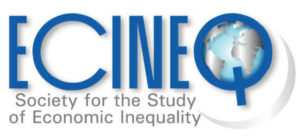New Perspectives on the Gini and Bonferroni Indices of Inequality
Working Paper 2020-538
Abstract
This paper rigorously demonstrates that for any unequal income distribution, the well-known Gini index of inequality is bounded above by the recently revived Bonferroni inequality index. The bound is exactly attained if and only if out of n incomes in the society, $(n -1)$ poor incomes are identical. The boundedness theorem is shown to possess a duality-type inequality implication. Reinterpreting a property of the absolute Gini index, noted by Weymark (1981), we propose a new postulate, `additive monotonicity’, for inequality indices and analyse its sensitivity to the absolute and relative Bonferroni, and the relative Gini indices. Finally, we look at the pattern of the income distribution when a society wishes to guarantee a minimum income for the worst off person and fixes the inequality levels, as measured by the Gini and the Bonferroni indices, at some specific values.
Authors: Satya R. Chakravarty, Palash Sarkar.
